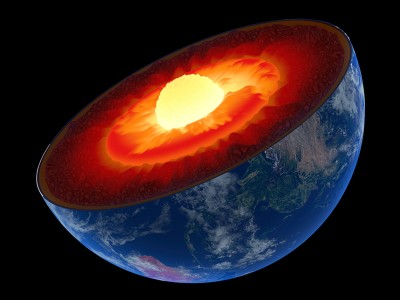
Earth’s inner core was long considered to be completely solid, but research has shown that it can be deformed.Credit: Pavel Chagochkin/Alamy
Earth’s inner core is changing shape, scientists have found.
The discovery resolves a long-simmering controversy about what’s happening at the heart of the planet — which was long thought to be solid and unyielding. But it also opens new questions about how changes in the core could affect the length of our 24-hour day, Earth’s magnetic field and more.
Has Earth’s inner core stopped its strange spin?
“After decades of research and debates, we are coming to an ever-clearer picture of the changing inner core,” says Xiaodong Song, a seismologist at Peking University in Beijing who was not involved in the work.
Researchers made the discovery by analysing how seismic waves from earthquakes travelled from the South Sandwich Islands in the South Atlantic Ocean to seismometers in Alaska and Canada, on the other side of the planet. The waveforms, or shapes, of some of the seismic signals changed between 2004 and 2008. Those shifts occurred because the waves bounced off the surface of Earth’s inner core — which was changing shape, the scientists say.
“For the first time we’re seeing that it’s deforming,” says John Vidale, a seismologist at the University of Southern California in Los Angeles. He and his colleagues report the finding today in Nature Geoscience1.



